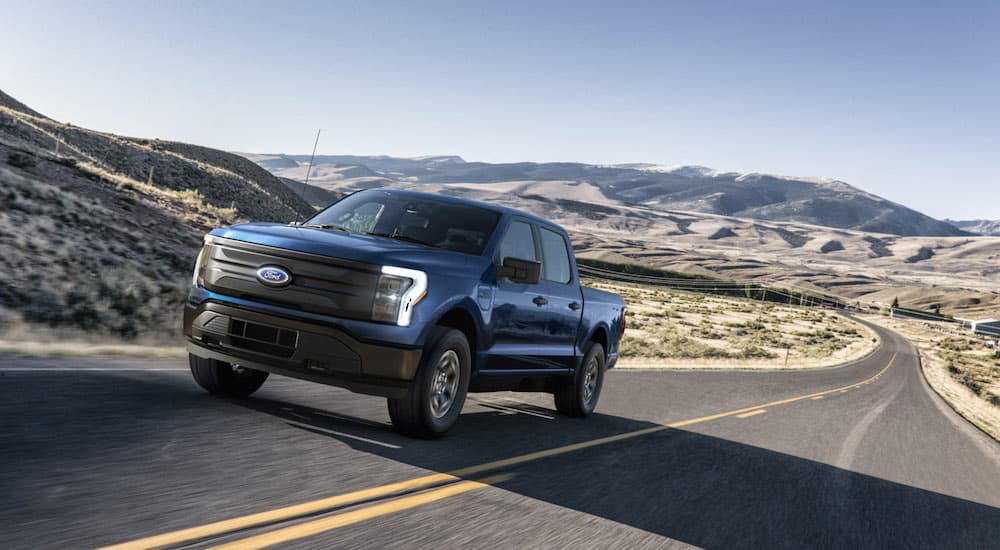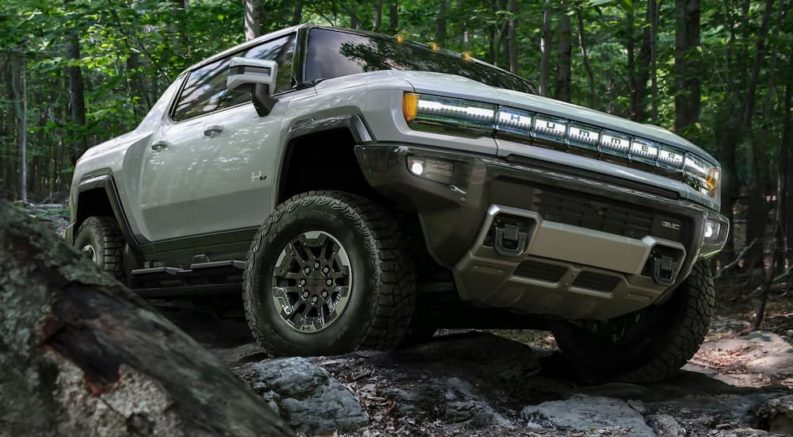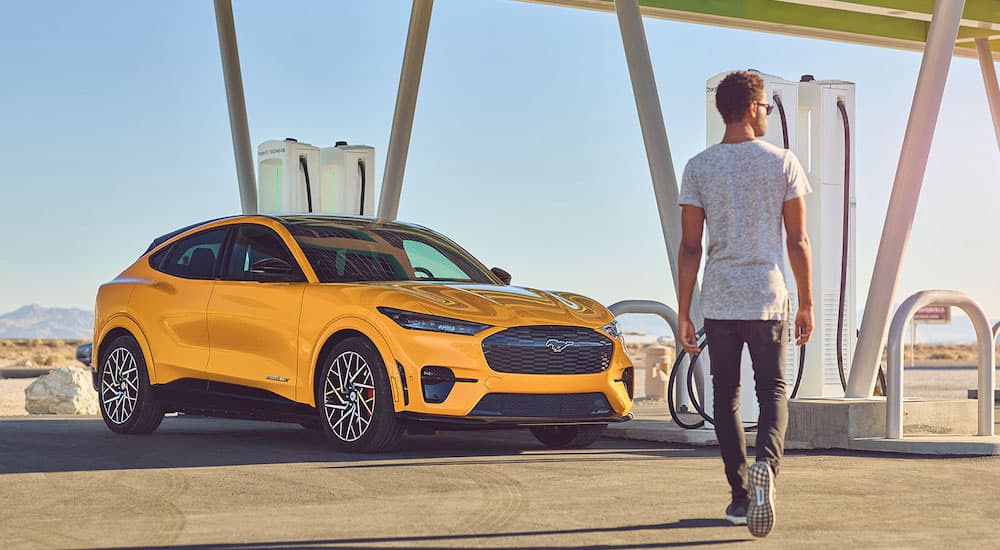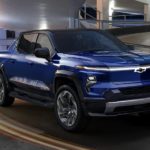One of the most exciting industries in the world is the electric vehicle (EV) segment. After years of tantalizing hybrids and odd-looking short-range electric commuters, the rest of the industry is catching up to Tesla’s lead, and the goals that manufacturers have for worldwide lineup electrification by 2035 are staggering.
Yet if details regarding GM’s total conversion to electric vehicles or Nissan’s net-carbon-neutral lifecycle ambitions are staggering, the scope of the change necessary to supply this electric revolution is downright mind-boggling. While transforming every Silverado and Rogue into an EV sounds like a simple matter for manufacturers, the materials which go into batteries are radically different from the steel, aluminum, and titanium that most powertrain components are composed of today. What looks like a 1-for-1 powertrain swap for GM is a 1-for-100 transition for the industry that supplies one of an EV battery’s most important metals.
Don’t believe it? In 2020, lithium production was dominated by Australia, Chile, and China, accounting for 46%, 24%, and 16% of the world’s supply, respectively––a whopping 86% of the total 86 thousand tonnes of lithium mined that year. While this was plenty for our needs during the worldwide COVID-19 pandemic, the estimated demand for 2030––which is basically next week in industrial terms––is 185 thousand tons, far outstripping current supply capacities!
The warnings are dire, and investments are needed to develop the forecast capacity requirements for lithium if the world is going to successfully meet the legal mandates for electric vehicles. Reuters shared that Albemarle lithium division head Eric Norris warned, “We need certain economics to be able to continue to grow,” while Livent CEO Paul Graves insisted, “the demand side of the equation has to be very thoughtful about what its business plans are over the next three or four years.”
Snow Lake Lithium CEO Phillip Gross was more on the nose with his assessment: “If we don’t act now to secure a seamless lithium supply chain from rock-to-road, the North American car industry will not exist in 10 years’ time.”

Lithium 101
Fortunately, the opportunity for substantial improvements in the North American lithium industry is real. Solutions to this significant problem can be found in some of the hottest and coldest places on the entire continent!
First, let’s get a little background on where lithium comes from. Unfortunately, real-life mining is never as simple as Runescape made it look. Metals like lithium are present in the Earth’s crust, embedded in minerals with chemical links to other elements. To make use of them, we must somehow separate them from those other elements and gather them in a controlled way, requiring a series of chemical transformations.
One of the traditional ways to produce lithium is to use an evaporation pond covering hundreds of acres, separating pure lithium out of the lithium brine pumped from underground as the water gradually evaporates. Another common source is a greenish mineral called spodumene, which also contains aluminum, silicon, and oxygen. With higher lithium concentration in spodumene than in brine, and a lower environmental impact than the aquifer-draining evaporation pond process, it offers the chance at sustainable processing that moves the lithium into a hydroxide or carbonate compound. These materials can more easily release the lithium into a pure form than spodumene, which presents a greater challenge for sustainable initiatives.
Getting Warmer…Warmer…Hot! Molten Hot!
A nascent technology called “direct lithium extraction” (DLE) operates the same way that a household water softener does. Compared to brine pools, it has the potential to extract lithium from water in a shorter time, using much less land and providing the opportunity to return the water to its source. Although it’s not proven at scale––Albemarle Corp is not the only lithium producer looking elsewhere for short-term solutions due to concerns about the hurdles DLE faces from its high demand for water and energy––it has Wall Street’s attention and is anticipated to supply 25% of the world’s lithium by 2030.
One key OEM answering the call of lithium executives to partner with them and provide the “certain economics to be able to continue to grow” is Detroit’s own General Motors. GM is partnering with Controlled Thermal Resources Ltd for one of DLE’s first commercial tests at California’s desolate Salton Sea. The poisoned waters of this vacation-gone-wrong destination happen to collect a substantial quantity of both lithium and heat from the San Andreas Fault that it sits upon. It’s hard to overstate how excited CTR is for their project to come to fruition:
CTR’s lithium resource at the Salton Sea in California is one of the largest known lithium brine resources in North America. The integration of direct lithium extraction with renewable geothermal energy offers the highest sustainability credentials available today. CTR’s closed-loop, direct lithium extraction process utilizes renewable power and steam—significantly reducing the time to produce battery-grade lithium products and eliminating the need for overseas processing. CTR’s operations will have a minimal physical footprint and a near-zero carbon footprint. The brine, after lithium extraction, is returned to the geothermal reservoir deep within the Earth.
It’s no joke––not only is the superheated water at the bottom of the Salton Sea a source for completely-renewable geothermal energy, but the California Energy Commission has also estimated that there’s enough lithium down there to produce 600 thousand tons per year. That’s more than 6 times the current global production!
Getting Colder…Colder…Cold! Ice Cold!
Going in completely the opposite direction in almost every single way is Snow Lake Resources Ltd, based in Winnipeg, Manitoba––some 400 miles north of Minneapolis. They have land in the town of Snow Lake, close to the fantastically named mining city of Flin Flon, an additional 400 miles north of Winnipeg, which contains an exciting lithium prospect. The spodumene deposits in the pegmatite clusters of the Thompson Brothers Lithium Project area are massive crystals with predictable, simple formation patterns like those which produce 25% of the world’s lithium today. The lithium hydroxide that can be made from spodumene is friendly to battery production, and with a location just 40 miles from the existing Trans Canada Railway network, it has easy access to major manufacturing hubs in the central US as well!
The mine’s expectation is to produce 160 thousand tons of ore per year for a decade; for context, Tesla has signed contracts to receive 110 thousand tons per year for 4 years from Core Lithium to satisfy its raw material needs. With over 55,000 acres to explore in a mining-friendly region, Snow Lake Lithium has reason for optimism, and that enthusiasm was shared by investors who poured $24 million into its IPO in November 2021.
Of course, the lithium itself is not the only reason for excitement. A location barely 500 miles from the border should greatly excite the American government, which is investing in local lithium-ion battery production and recycling to the tune of $2.91 billion but is loath to support any actual mining activity in the United States. While China’s stranglehold on the lithium hydroxide processing industry is perceived as a threat to national security, a negative view on mining has led the Biden administration to block a nickel and copper mine in Minnesota that could have proven crucial to securing North America’s supply chain beyond 2025.
The trouble that the Biden administration has with this industry is that well-meaning folks with environmentally-conscious intentions often fail to acknowledge the necessary compromise between having green products like EVs and the unsavory processes required to make them. Fortunately, Snow Lake Lithium’s location in central Manitoba is ideal for climate requirements as well. The province of Manitoba is huge––roughly one Massachusetts shy of Texas in terms of land area. It is also incredibly wet, with enough lake area to cover the whole of Indiana––nearly as much water as Michigan, which is known for bordering 4 of the 5 Great Lakes. This abundant natural resource accounts for 98% of Manitoba’s electricity through hydroelectric dams, with the remaining 2% of less-sustainable electricity easily replaceable by other renewables for the Snow Lake mine’s needs.
Inspired by this incredibly climate-conscious energy sourcing, Snow Lake Lithium has partnered with Meglab in Quebec to make the project the world’s very first 100%-electric lithium mine. This is no pie-in-the-sky start-up, either––Snow Lake’s executive team averages 20 years of experience, and Meglab has been advising and supplying mining projects since 1994. Their 1000V architecture upgrades Canada’s standard 600V enough that mines normally needing seven substations to maintain a strong supply can get by with only two, allowing for significantly reduced installation costs and more efficient operation overall.
Electric operation, powered by water, in a prime location of a friendly nation––what more could the American EV industry ask for?!
The Catch
The answer turns out to be a processing plant. 77% of the world’s lithium hydroxide processing capacity is Chinese. Set aside global politics for a moment and picture the sheer logistics and self-destructive optics of going through billions of dollars worth of trouble to develop a completely sustainable mining operation only to send all of the lithium ore produced across the Pacific Ocean on a cargo ship to be refined into battery-quality lithium for an “environmentally friendly” EV. It is essential to the supply chain, and to Snow Lake Lithium’s business model, that a lithium hydroxide processing plant is built locally to handle the transformation.
It just makes good sense––but also costs a prettier penny than refined white lithium can fashion on its own. “At this stage, we are looking to integrate that with an actual OEM, whether that’s a battery or automobile manufacturer, so we can [joint venture] with them from mine to the car in a seamless supply chain,” said Phillip Gross. With the goal of getting support from both Canadian and American administrations to secure a partnership with a major OEM, Snow Lake Lithium is as focused on securing a sustainable processing system as they are on the mine.
It’s the kind of big-picture thinking the industry needs these days, and there are plenty of partners big enough to fill the gap in North America’s EV supply chain with a hypothetical “Snow Lake Lithium Processing Plant” who would also benefit directly from a local lithium source. Ford is making enormous investments in Canada and the Mississippi River corridor, GM in Michigan, and Stellantis in Ontario. VW is making EVs in Tennessee, and LG Chem’s battery plants in middle America would be direct customers of Snow Lake Lithium.
Each of these industrial titans will benefit from a North American processing plant. The capital is there. The know-how is surely within reach, too. The only question remaining is: who’s it going to be?





